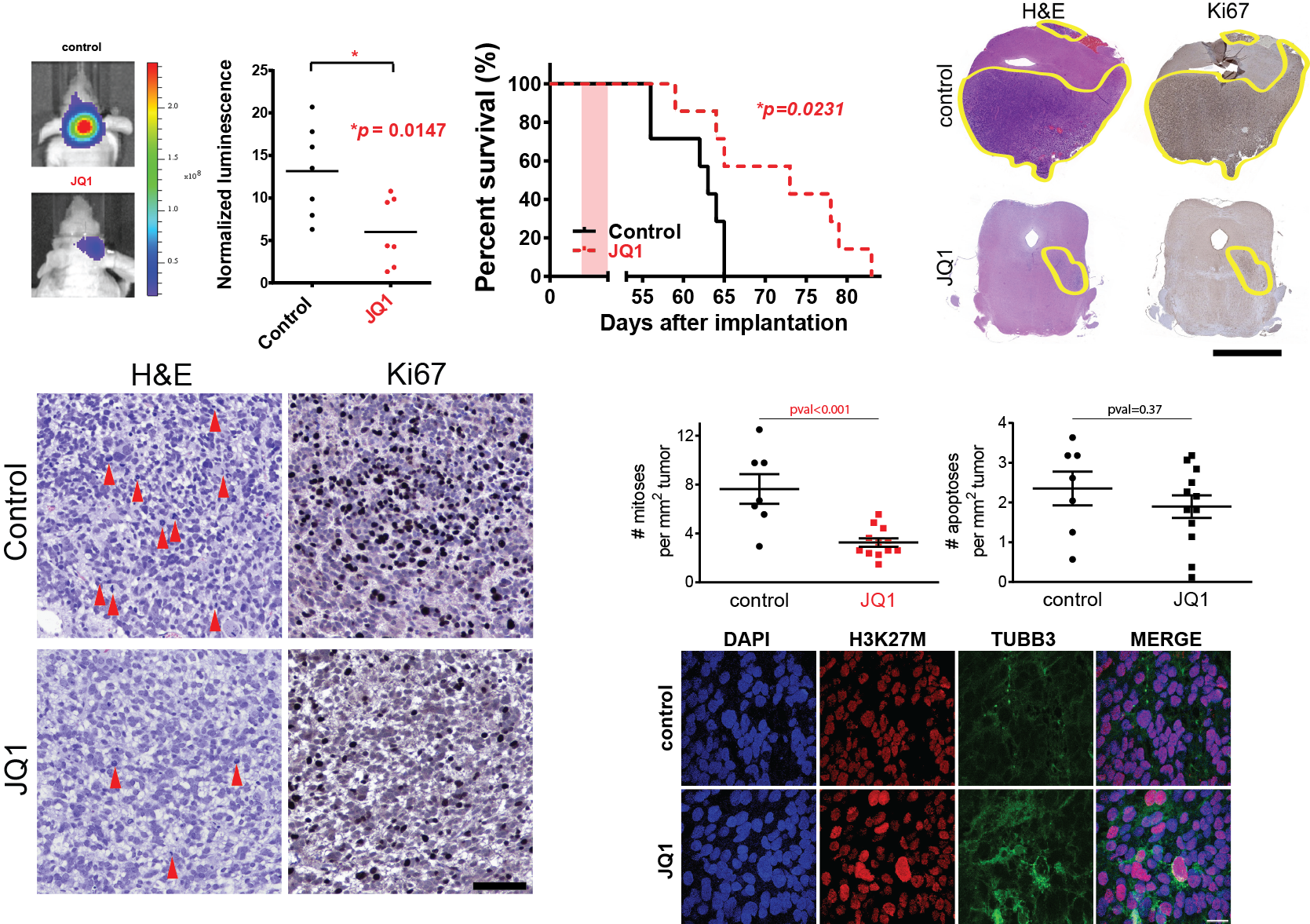Presenting Author:
Principal Investigator:
Department:
Biochemistry and Molecular Genetics
Keywords:
Cancer epigenetics, chromatin, Polycomb group proteins, bromodomain proteins, BET inhibitors, Diffuse Intrinsic Pontine Glioma
Location:
Third Floor, Feinberg Pavilion, Northwestern Memorial Hospital
B12 - Basic Science
Therapeutic targeting of polycomb and BET bromodomain proteins in DIPG
Diffuse Intrinsic Pontine Glioma (DIPG) is a highly aggressive pediatric brainstem tumor characterized by rapid and uniform patient demise. A heterozygous point mutation of histone H3 occurs in more than 80% of these tumors, and results in a lysine-to-methionine substitution (H3K27M). Expression of this histone mutant is accompanied by a reduction in the levels of Polycomb Repressive Complex 2 (PRC2) mediated H3K27 trimethylation (H3K27me3) and this is hypothesized to be a driving event of DIPG oncogenesis. Despite a major loss of H3K27me3 PRC2 activity is still detected in DIPG cells positive for H3K27M. To investigate the functional role of H3K27M and PRC2 in DIPG pathogenesis, we profiled the epigenome of H3K27M mutant DIPG patient cells and found that H3K27M co-localizes with H3K27 acetylation (H3K27ac). In accordance with previous biochemical data, heterotypic H3K27M-K27ac nucleosomes co-localize with bromodomain proteins at actively transcribed genes, whereas PRC2 is excluded from these regions, suggesting that H3K27M does not sequester PRC2 on chromatin in patient cells. Residual PRC2 activity is in fact required to maintain DIPG proliferative potential by repressing neuronal differentiation and function. Finally to examine the clinical relevance of bromodomain protein recruitment by heterotypic H3K27M-K27ac nucleosomes in DIPG, we treated an in vivo model with BET bromodomain inhibitors and demonstrate they efficiently inhibit tumor progression, thus identifying this class of compounds as potential therapeutics in DIPG.

